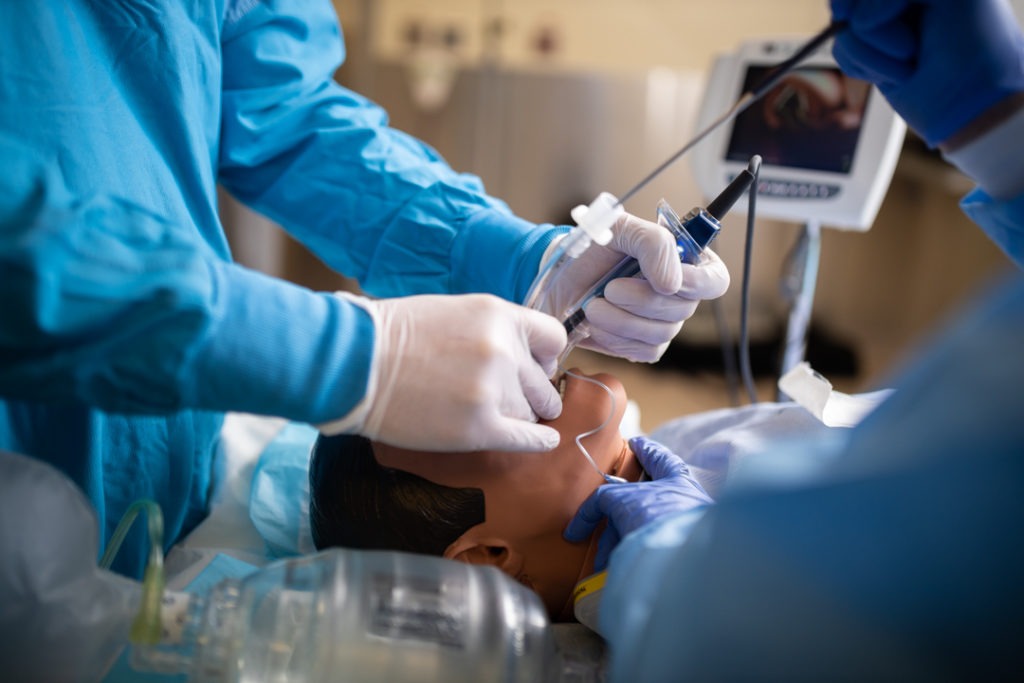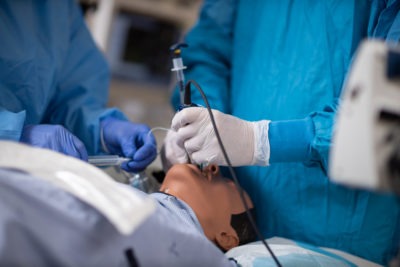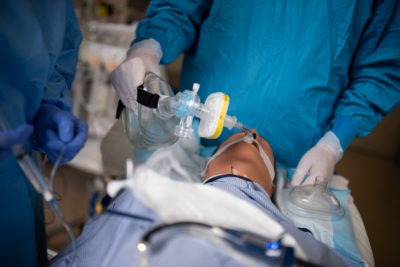
At the ready for risky COVID-19 procedure
Intubation is considered one of the riskiest procedures to perform on a COVID-19 patient. It involves giving medications to sedate or anesthetize the patient in order to insert an endotracheal tube into the patient’s throat to help them breathe. During the insertion, patients may cough, spraying tiny droplets of mucous into the air.
Reducing risks
To reduce the risk of exposure to the virus during these procedures, a team of anesthesiologists has joined forces to lend their expertise to staff across Hamilton Health Sciences. The Anesthesia Rapid Response Team (ARRT) is led by an anesthesiologist who provides on-demand support for airway management and resuscitation.
“The idea is for a practiced team to provide the most efficient intervention,” says Dr. Matthew McFarling, anesthesiologist. “We want to maximize first attempt success, and manage the immediate consequences of the anesthetic and intubation procedure.”
Supporting safe intubation
 The ARRT team works with highly-skilled nurses, respiratory therapists, and other doctors on the unit to support safe intubation. It is a challenging procedure. Succeeding on the first try reduces everyone’s risk of exposure to COVID-19 and is better for the patient. These anesthesiologists also help with resuscitation, inserting invasive monitors and transporting patients to the Intensive Care Unit after intubation or resuscitation.
The ARRT team works with highly-skilled nurses, respiratory therapists, and other doctors on the unit to support safe intubation. It is a challenging procedure. Succeeding on the first try reduces everyone’s risk of exposure to COVID-19 and is better for the patient. These anesthesiologists also help with resuscitation, inserting invasive monitors and transporting patients to the Intensive Care Unit after intubation or resuscitation.
Since launching a few weeks ago, the ARRT has leapt into action to help several patients. The team was created anticipating a much higher volume of COVID-19 patients, but they are glad there have been relatively few critically ill people in our hospitals as a result of this disease.
“We credit this best-case scenario largely to the efforts of Hamilton’s residents who continue to follow public health recommendations and have managed to help us keep our in-patient numbers low,” says anesthesiologist Dr. Madi Ali.
Preparing for the worst
 While numbers remain low, the team is continuing to prepare for the worst-case scenario since COVID-19 is such an unpredictable disease.
While numbers remain low, the team is continuing to prepare for the worst-case scenario since COVID-19 is such an unpredictable disease.
“We are hopeful that we will not get there,” says Dr. McFarling. “But we remain vigilant in our community awareness, the spirit of cooperation, and commitment to public health recommendations.”
The ARRT is available 24/7 at a moment’s notice at both Juravinski Hospital and Hamilton General Hospital.
